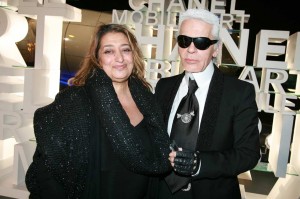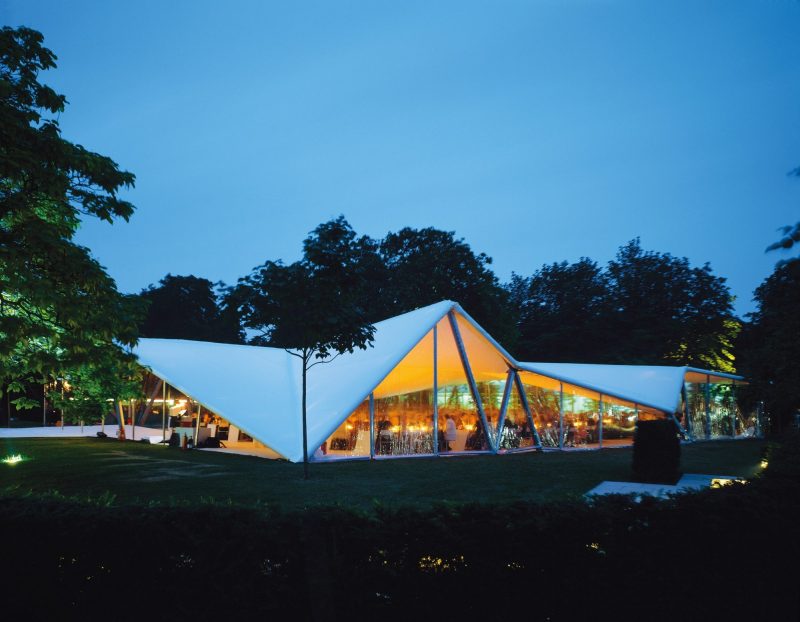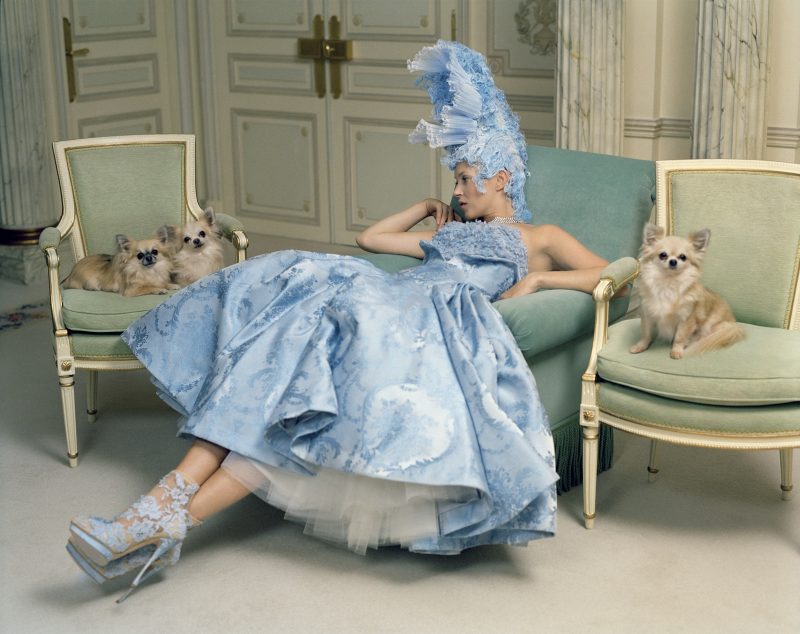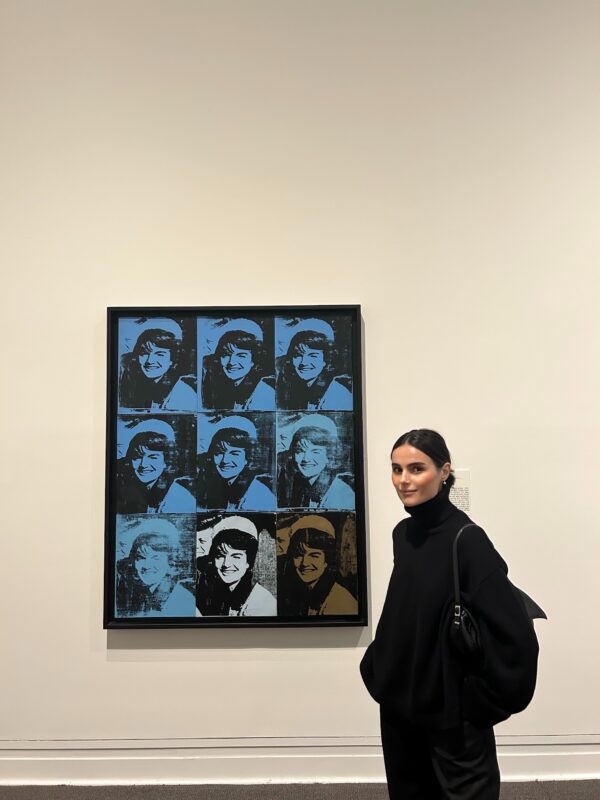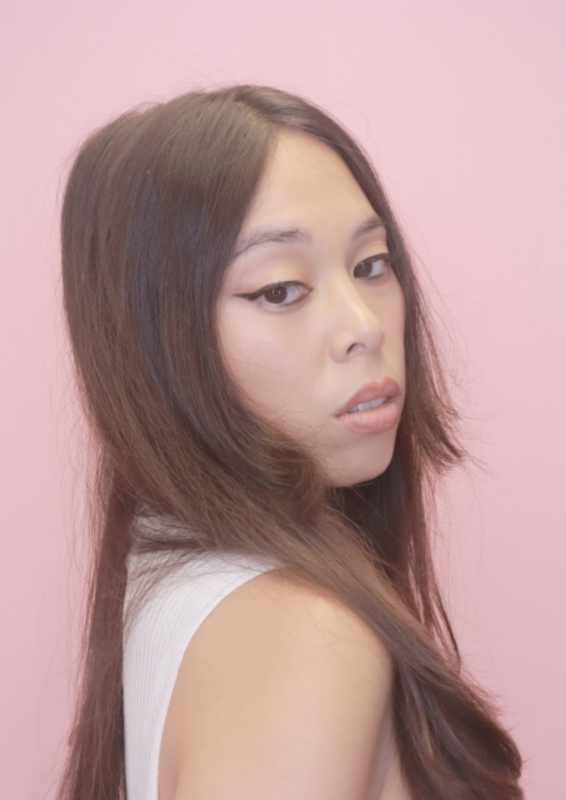Karl Lagerfeld, Artistic Director of CHANEL, MaureenChiquet, Global CEO of CHANEL, and Bruno Pavlovsky, CHANEL Fashion President, along with Adrian Benepe, Commissioner of the Department of Parks & Recreation for the City of New York, and Douglas Blonsky, President of the Central Park Conservancy and Central Park Administrator, announced today that Central Park will serve as the sole American venue for Mobile Art, a traveling international exhibition housed in a gleaming futuristic pavilion designed by Pritzker Prize-winning, London-based architect Zaha Hadid. Commissioned by CHANEL, Mobile Art presents changing installations of works by foremost contemporary artists from Europe, the United States, Asia, Russia and Latin America, each of whom has made a unique piece for the project exploring the visual, conceptual and cultural possibilities in the convergence of fashion and art.
Expected to draw thousands during its run in NewYork City, Mobile Art advances into the 21stcentury a longstanding CHANEL tradition of collaborating with leading fine artists of the day and will take its place among the varied and outstanding cultural offerings available to the public in Central Park, one of the world’s most celebrated and beloved urban spaces and a designated National Historic Landmark.
Mobile Art will be sited in Central Park’s Rumsey Playfield on the East Side of Manhattan, off Fifth Avenue at 69th Street. The pavilion will be open to the public free of charge with reserved, timed tickets, from October 20 through November 9,2008. Visitors will be able to view the installation during public hours each day, and CHANEL will host additional special evening events in collaboration with leading New York arts institutions and cultural organizations, including the Central Park Conservancy.
“Our partnership with CHANEL continues the great tradition of bringing world class cultural offerings to New York City’s parks,” said Parks & Recreation Commissioner Adrian Benepe. “Zaha Hadid’s traveling pavilion will place a futuristic work of architecture and outstanding works of contemporary art in an historic setting in the heart of Central Park. The contrast will be fantastic, melding the vision of one of the world’s most important fashion houses with the beautyof one of the world’s most significant works of landscape design. We are very pleased to welcome this ambitious project to New York City and encourage all New Yorkers to visit Central Park to see it.”
“As one of America’s most important works of art and a treasured New York landmark, Central Park is the perfect setting for CHANEL’s innovative and free public art exhibition,” said Douglas Blonsky of the Central Park Conservancy. “As caretakers, the Central Park Conservancy works in partnership with the City to create a safe, beautiful and inviting space where cultural opportunities such as this can flourish.”
Mobile Art was commissioned by CHANEL and conceived by the company’s renowned designer Karl Lagerfeld. It was originally imagined as a means to mark the first appearance fifty years ago of the iconic CHANEL “2.55” quilted stitched-leather handbag. Designed by Coco Chanel, the 2.55 has evolved over the decades into one of the most enduring examples of 20thcentury fashion – a kind of cultural totem collected by museums and coveted by consumers in countries around the world. That bag and the traditions of the factory in France, where it is still made today, were presented to Zaha Hadid and the participating artists as jumping off points for their contributions to Mobile Art. The resulting exhibition is a multi-dimensional meditation on fashion as a powerful, exciting, sometimes perverse and occasionally poignant conductor of fantasy, identity, culture and self-expression.
The New York presentation of Mobile Art also coincides with the 150th anniversary of the selection of Frederick Law Olmstedand Calvert Vaux as the designers of Central Park, an event that ultimately yielded one of the world’s urban wonders, a feat of nature, technology and public culture that hosts 25 million people from around the world every year. In celebration, CHANEL has made a significant gift to the Central Park Conservancy to support that private non-profit organization’s mission to restore, manage and preserve Central Park, in partnership with the public, for the enjoyment of present and future generations.
“We are deeply honored and pleased to present Mobile Art in Central Park,” Maureen Chiquet of CHANEL commented. “The Park has been described as ‘the marriage of aesthetics and engineering,’ and this resonates deeply with our company. For CHANEL, great fashion is not merely a business but also a cultural enterprise. The arts have always had a profound place in the world of CHANEL, just as they have in the life of Central Park. Ever since Coco Chanel worked in collaboration with such figures as Jean Cocteau, Pablo Picasso and Igor Stravinsky, our company has enjoyed a dynamic exchange with artists around the world, and Mobile Art at Central Park will continue that tradition. We are privileged to be able to bring this initiative to Central Park, where it can be enjoyed by New York residents and visitors alike in a sublime setting open to all.”
Mobile Art launched its two-year worldwide tour in Hong Kong in February 2008, before traveling to Tokyo, where it has beenon view at the National Yoyogi Stadium Olympic Plaza. Following its presentation in New York City, Mobile Art will travelto London and Moscow, concluding its tour in Paris in 2010.
The Architecture – Commenting upon his choice of architect for the Mobile Art commission, Karl Lagerfeld said, “Why did I choose Zaha Hadid? She is a kind of Coco Chanel of today, not in fashion, but in architecture. Also if you are lucky enough to know the greatest living architect and fortunate enough to have her accept an invitation to do a project, then it is magical. This all began with a small sketch, a computer drawing, a concept. I gave Zaha the general idea in a few moments, and her interpretation and fulfillment of that idea is more than perfect. I am full of admiration.”
Zaha Hadid’s response to Lagerfeld’s Mobile Art concept was to create a pavilion that, like a handbag, is a completely portable and functional container with vast symbolic potential. Made of highly engineered, gleaming white arched fiberglass-reinforced polymer panels, the architect’s enigmatic itinerant building is a sculpture in its own right. It is comprised of 700 components that, once assembled, appear to be a very distant abstraction the famous quilted CHANEL handbag. “There is a touch of quilting in the geometrical structure of the art Container,” added Karl Lagerfeld.
On the subject of the Mobile Art commission, Hadid has said,“For me, the fascination of the project was the challenge oftranslating the intellectual and physical into the sensual – experimenting with completely unexpected spaces and a totallyimmersive environment for this global celebration of art, fashion and the work of CHANEL. I see the pavilion as a kind of a totalartwork that continually reinvents itself as it moves from Asia to the USA, Russia and Europe.”
Hadid’s pavilion has the startling appearance of glamorous spaceship. Its 2,300 square feet of interior exhibition space wrap a central court illuminated by a translucent ETFE skylight, giving onto generous public areas at the building’s entrance, and a separate ticketing kiosk beyond. With its panels and steel base structure constructed at a factory in Yorkshire, England, the building is an ingenious kit of parts conceived to facilitate disassembly and reassembly in six cities on three continents. For Mobile Art, Hadid and her London team drew upon the latest digital technology, including yacht-modeling software, to refine and develop the startlingly original form of the pavilion. On the inside, a simple loop folds into a sequence of darkened spaces around the structure’s circumference, embracing visitors in intimate proximity to the art and one another before depositing them into the daylight suffused central court and the end of the exhibition. The building’s overall organization and circulation follow the drift of its curving form; the whole becomes an immersive field in which visitors move experientially through the spaces, as if moving through a three-dimensional film.
“I have always been interested in how movement affects architecture,” Hadid commented. “As if in a film, we are not seeing the world from one particular angle, but always getting a more complex and multi-dimensional view. That is what I am experimenting with in the Mobile Art pavilion.”
According to Hadid, the 20 foot-tall, 95 foot-wide organic form of the building evolved from the geometries found in nature: “Mobile Art is all about movement and fluidity. The pavilion’s form is a torus, a donut-like circular geometry that one finds in a nautilus shell, which is the perfect diagram for an exhibition. This arrangement allows visitors to see each other moving through the space and interacting with the exhibition. Everyone experiences the building in his own way. You’re not confined to look at space in any one given way. Instead it’s a landscape that you meander through, that gives freedom to your imagination.”
The total fluidity of the pavilion’s curvilinear geometries is an obvious continuation of the architect’s much-acclaimed 30year exploration of systems for continuous transformations and smooth transitions in architecture, seen in such internationally acclaimed buildings as Hadid’s BMW Central Building in Leipizig and the Phaneo Science Center in Wolfsburg, both in Germany.
The Art
For Mobile Art, CHANEL assembled a roster of leading contemporary artists with the assistance of Fabrice Bousteau, curator and editor of the art magazine Beaux Arts, and invited each to empty his or her proverbial bag in a singular way. Representing different generations, diverse nationalities and wide-ranging points of view, this group of artists has engaged in an exploration of the handbag as a way to examine an array of experiences, ideas and issues suggested by the intersection of art, fashion and architecture.
To pay tribute to the mutable nature of fashion, art and the fluidity with which both seem to morph and change as they are contextualized in different cities and nations around the world, CHANEL also has conceived Mobile Art as an evolving proposition: When the pavilion arrives at Central Park, visitors will see a different presentation of works than those on view previously in Tokyo or Hong Kong. Mobile Art also extends out beyond its architectural container, with works presented in CHANEL boutiques in each city on the global tour supplementing those inside the pavilion.
